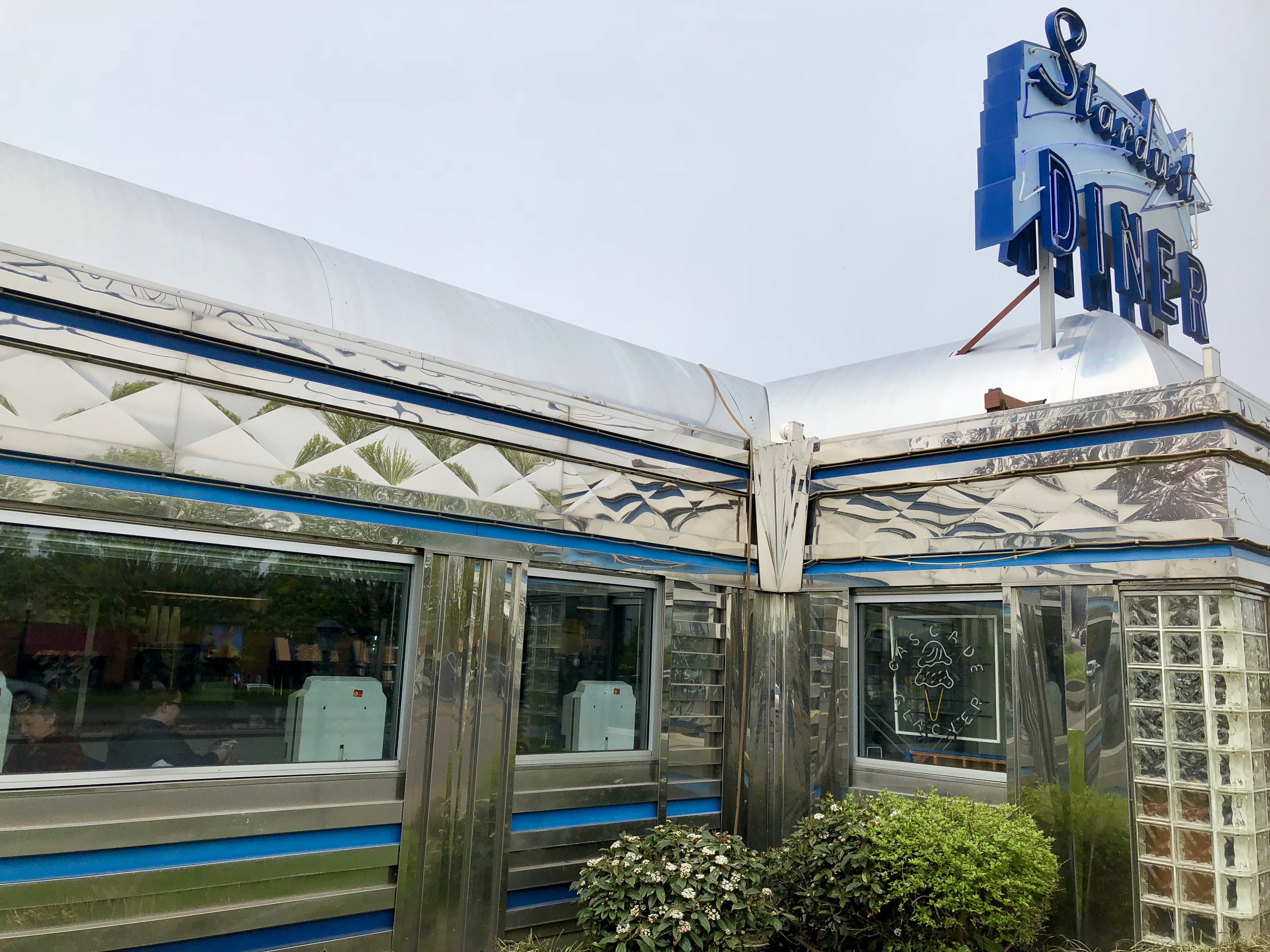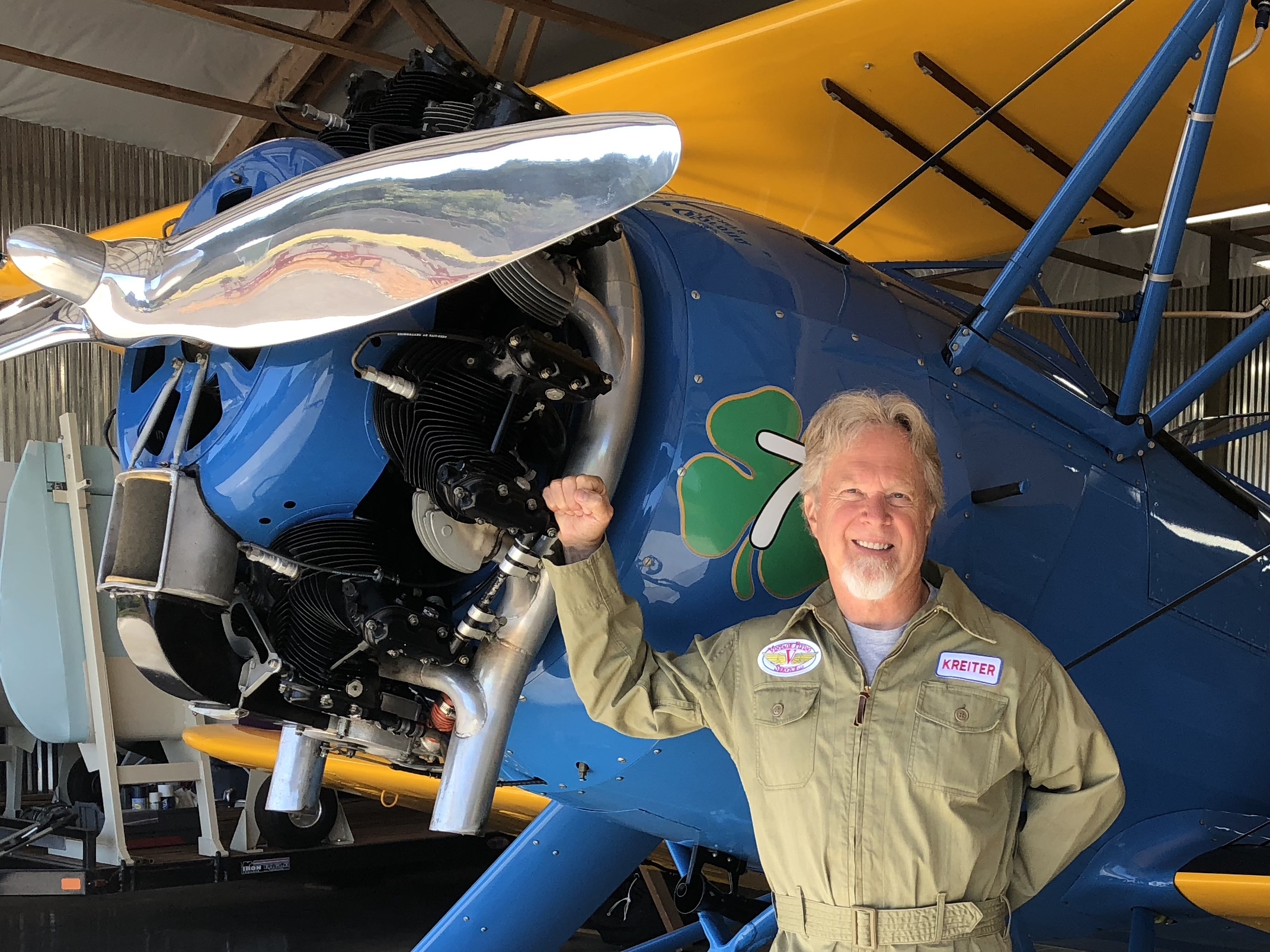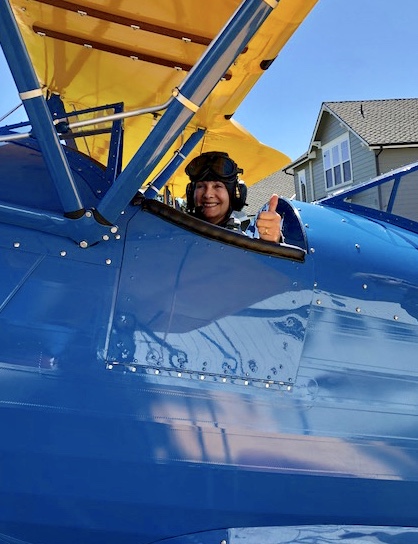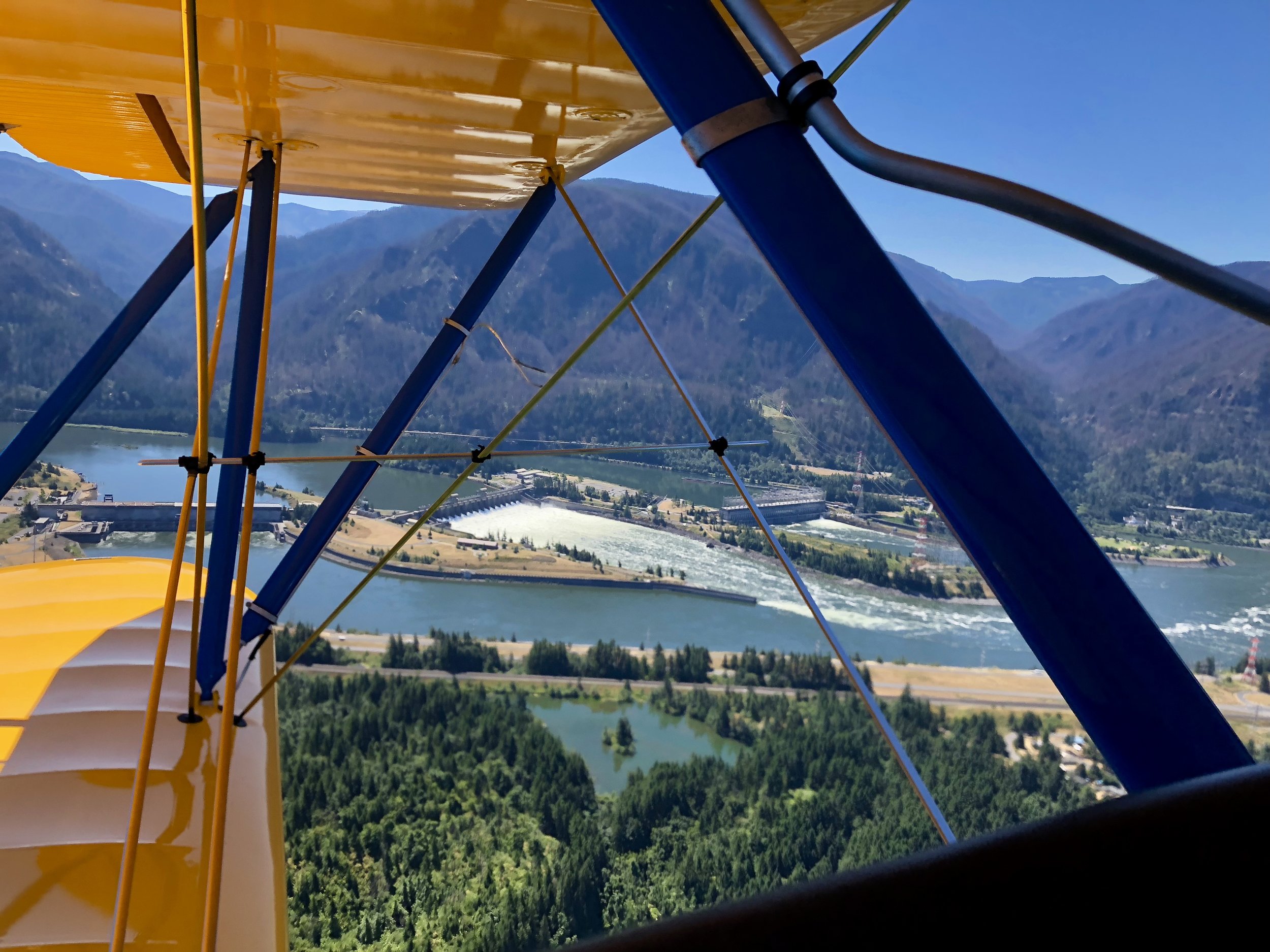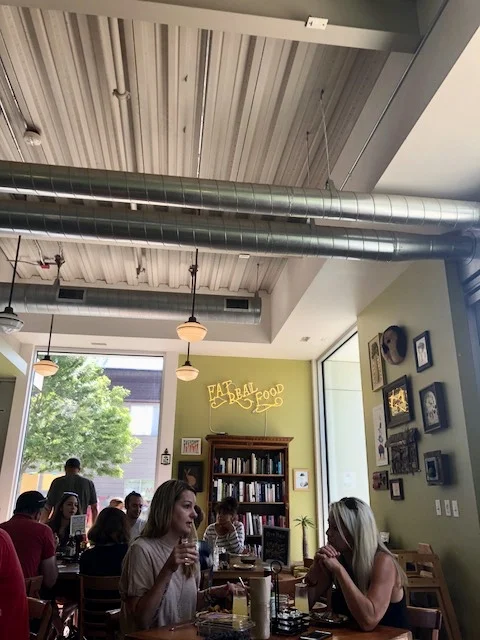Kevin Kreiter: Heart of an Aviator
Before Kevin Kreiter goes up in his 1940 WACO UPF 7 biplane, he says a prayer. Pilots have regimented pre-flight routines, checklists and inspections and sometimes quirky things they do before each flight. In 2012 during Fleet Week in San Francisco, I met Captain Greg McWherter of the Blue Angels and asked him if he was superstitious when it came to flying. He said, "I always put in my earplugs the exact same way and have a fresh stick of chewing gum." Gum and a prayer. I'd do both, for extra good luck.
George S. Lichter, the guy I am married to, was a bush pilot in Alaska before I met him. He flew a Piper PA 13 and was taught to fly by reknowned Alaskan pilot, Sumner Putnam. Mostly because of my husband's love of small aircraft, I attended an historic aviation ceremony in Vancouver, Washington and that's where I met Kevin Kreiter. He flew his airplane to Pearson Field for the event and there she was parked right in front of the hangar. Without hesitation I asked to have my picture taken in front of her and before the event was over, Kreiter agreed to grant me an interview for my new blog, Call of the Couve. I didn't expect an invitation to go flying.
Kevin Kreiter's WACO UPF 7 Parked at Pearson Field, Vancouver, Washington
At 0900 (9 am military time) on a beautiful morning in July I arrived at Kevin's house for the interview. I've known some golfers who live in houses on the edge of their favorite golf courses but I had no idea that airplane owners/pilots build homes adjacent to the airfield, in order to easily take off from where they live. Very cool.
Kevin had coffee waiting for me inside his hangar, on his property. We sat beside the gleaming WACO and talked together, with wife Sonja joining us, as small aircraft took off and landed on the charming little air strip right outside. We talked about his childhood and love of vintage airplanes, but the most interesting part of the conversation occurred during his thoughtful and heartfelt answer to my question, "Who are your aviation heroes?"
Kreiter says he would really like to go back in time, to the magnificent era of aviation pioneering. Early heroes include the obvious such as Charles Lindbergh, who flew the "Spirit of St. Louis" from New York to Paris in record time, alone, in a single-engine monoplane which took thirty-three and one half hours. He landed in Paris on May 21st, 1927, only twenty-five years old.
Then there was Amelia Earhart, who five years to the day after Lindbergh's famous flight, on May 21st, 1932, completed the first female solo flight across the ocean, taking off from Newfoundland and landing in Ireland in under fifteen hours.
Kevin mentioned other pilots of distinction I had not heard of, so I initiated a bit of research to find out who these people were. James Harold "Jimmy" Doolittle (1896-1993) won the Medal of Honor as commander of the Doolittle Raid in World War ll, an air raid on Japan which took place four months after the bombing of Pearl Harbor. As an air speed racer, Doolittle famously won the 1925 Schneider Trophy Air Race in his Curtiss R3C-2 seaplane. He was also responsible for some great advances in aviation technology, including the development of instrument flying. In 1929 he was the first pilot to take off, fly and land an airplane solely with instruments, without a view from the cockpit.
James Harold Doolittle WIns the 1925 Schneider Cup
Have you heard of Roscoe Turner (1895-1970)? Recipient of the Distinguished Flying Cross, he began his career as a circus lion tamer, and became one of the country's most flamboyant pilots of the scarf and goggles aviation era. Turner was a barnstormer/stunt flyer who broke air speed records. In 1930 he flew the East-West transcontinental route in eighteen hours, forty-two minutes and thirty seconds. A Hollywood celebrity, Roscoe was frequently spotted walking his pet lion, Gilmore, who lived with him in Beverly Hills. Gilmore the lion cub flew everywhere with Turner sporting his specially designed lion parachute and harness until he got too big and cumbersome to fly with. He did, however, continue to make public appearances.
Roscoe Turner and Gilmore The Lion
Clearly, however, some of Kevin Kreiter's most beloved personal heroes are men who lived nearby as he was growing up...like his next door neighbor who in World War ll, parachuted in on D-Day minus one. A regret in life? Not having talked more with these veterans about their experiences. Kevin thinks the airmen would have opened up to him, had he expressed an interest in truly understanding what mid-air warfare was like. But he did not inquire and now they are gone, their stories forgotten. It has become routine for him upon recognizing an insignia, cap or pin belonging to a World War ll airman, that he shake hands, and give thanks for service. Just a few of these men and women remain in this world.
The story Kevin told me next, brought tears to my eyes and to Sonja's as well, who has probably heard it many times. The setting is a familiar one to Vancouver residents, Stardust Diner. I personally enjoy breakfasts there regularly.
Stardust Diner, Vancouver, Washington
One day while Kevin and Sonja were at Stardust, a veteran airman happened to be enjoying his meal there as well. Once back home, upon pulling into their driveway Kevin lamented to Sonja, "I wish I had talked to him". "Go back!" she said. And he did. The old man was just starting up his truck in the parking lot and a forty-five minute conversation ensued.
He told Kevin he was a lieutenant and flight leader in the European theatre in World War ll...B-17s. In a raid near Reims, his plane got shot up pretty bad. Lost two engines. Rest of the squadron was bee-lining it for base but damage to his aircraft was extensive, which made it fall behind, putting the crew in a vulnerable situation. In order to control the airplane and maintain an altitude of 2,000 feet, he gave the order to jettison everything non-essential. This would make them lighter. Out went guns, ammunition, oxygen masks, etc. Basically defenseless when enemy fighters come into view, six FW190's, and they pass right by.
Fw190 Fighter Plane
Prayer time. I wonder if he was chewing gum.
Yikes, off the left wing here comes the enemy flight leader pulling up right along side and he's peering into the cockpit. He flies above, goes below and around the hobbled airplane, looking at all the damage done. Then he pulls alongside once more, salutes, and takes off.
Kevin Kreiter grew up in Richland, Washington, in what he calls "a time of innocence...no one locked front doors and you were like one big family." He enjoyed camping, fishing and hunting but his Mom also welcomed him into the kitchen. By age eleven he was baking cakes from scratch and she also taught him how to use a sewing machine. Out in the garage, his father never shooed him away. Kevin worked on the car, learning how to change oil and spark plugs and claims that he had a mechanical inclination from the get-go. His Dad's dream, never realized because he was too young, was to be a World War ll fighter pilot. There were aviation magazines and model airplane kits in the house, and an airport three miles away, which they went to regularly. Kevin made aviation scrapbooks and read a lot about airplanes.
At around eight years of age, while his father was away on a business trip, the toilet quit working. To his mother's amazement, Kevin was able to figure out the problem and fix it. Yes, mechanically inclined.
Kevin Kreiter and his WACO UPF-7
Let's talk about the airplane, the WACO UPF-7 that Kevin Kreiter has restored. It took over 6,500 hours of labor and the collaboration of two master craftsmen in metalwork and woodwork to get Fifinella (the name given to her by Walt Disney) into flying shape. Kevin is an engineer.
"It takes special skills to work with these old airplanes because they are wood, metal and fabric." WACO (Weaver Aircraft Co.) was founded in the early 1920's and produced only 600 UPF-7s. They were a premier aircraft supplier, whose planes were used by the Civilian Pilot Training Program (CPTP) to train pilots getting ready to participate in World War II. Boeing produced 10,000 of a similar airplane, the Stearman.
The WACO was originally covered with Grade 4A Irish Linen, as fine a thread and as fine a weave as you could buy anywhere in the world. The linen was glued in place with a brush and a compound called buterate dope. This caused the linen to tighten up. However, the technique has a shelf life and when Kreiter tried to devise a modern solution to the longevity problem, he came up with a woven nylon material which he ironed in place, yes, with a common household iron.
There's a quote on the rudder that reads, "In memory of those who fought to rid the world of tyranny". Fifinella trained fighter pilots from Troy, Ohio to Montana and for the duration of World War ll she was flown every single day. Kreiter has the original logbooks and his goal was to get her back up in the air. Mission accomplished. "We love these old airplanes and want to become stewards and help other people to restore their aircraft and get them flying again. It's one thing to see them in a museum, another thing to see them in the air." And then Kevin Kreiter asked me if I'd like to go flying. The answer was yes.
Flying in Kevin Kreiter's WACO UPF-7
"I think we'll go for a ride above the Columbia River Gorge. Is that okay with you?" Um, yes please. He showed me how to step upon the wing in a certain spot and lower myself into the forward cockpit. Then he fastened the harness, I put on my helmet and we rolled across a grassy field to the runway where Kreiter stopped to run through his final pre-flight checks. The air was smooth and take-off was thrilling. Felt light as a feather as we headed up the gorge with him pointing out the sights. What a treat to view this landscape of volcanic terrain dipping into a deep river gorge with waterfalls, historic lodges, lookouts and dams...from above.
I especially loved seeing the Bonneville Dam from the air!
View of Bonneville Dam from a WACO UPF-7






